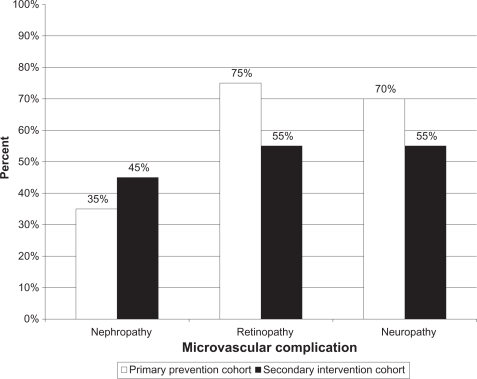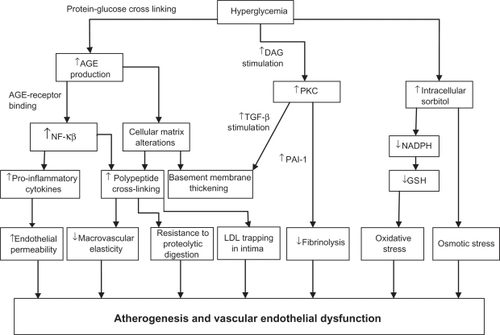Figures & data
Figure 1 The Diabetes Control and Complications Trial: percent reduction of microvascular complication with intensive therapy. Patients age 13 to 39 with T1DM were divided into two cohorts, primary prevention cohort (no complications), and secondary intervention cohort (mild to moderate retinopathy, urine microalbumin <200 mg/24 h).
The patients who underwent intensive therapy with insulin showed significant reduction of microvascular complications in both cohorts.
Drawn from data of Skyler JS. Diabetic complications. The importance of glucose control. Endocrinol Metab Clin North Am. 1996;25(2):243–254.Citation19

Figure 2 The contributions of hyperglycemia to vascular endothelial dysfunction and atherogenesis are mediated through several processes, including increased production of advanced glycation end products, activation of protein kinase C and sorbitol. These factors serve to enhance inflammatory processes including the activation of NF-κβ and the production of pro-inflammatory cytokines. In turn, these factors cause injury to the vascular endothelium. This final common mechanism promotes atherogenesis and facilitates the vascular complications of diabetes.

Table 1 Screening for nephropathy in pediatric diabetes
Table 5 Screening for dyslipidemia in pediatric diabetes
Table 2 Screening for retinopathy in pediatric diabetes
Table 3 Screening for neuropathy in pediatric diabetes
Table 4 Screening for hypertension in pediatric diabetes